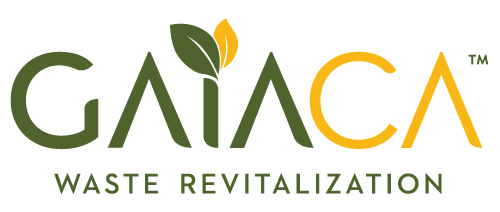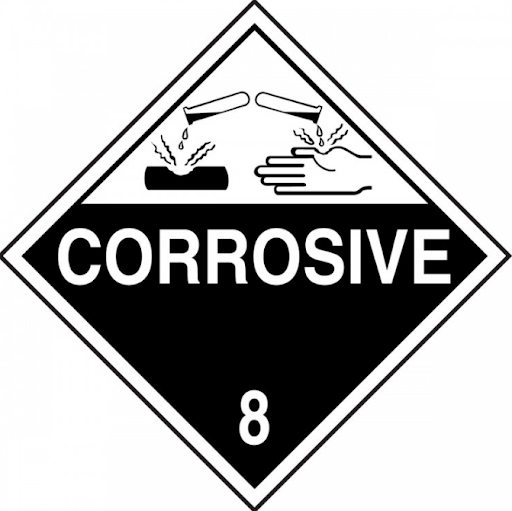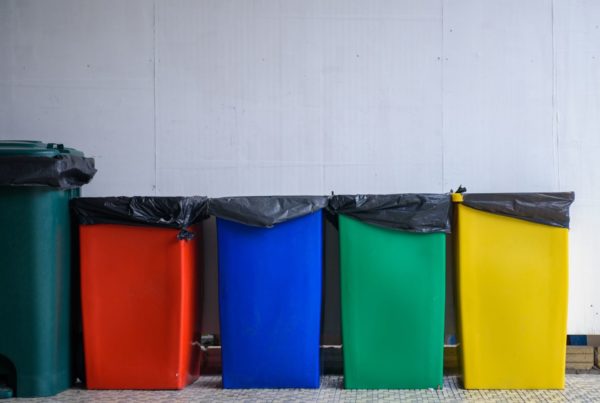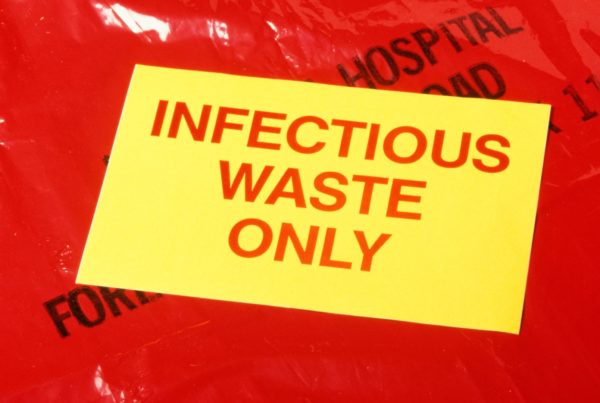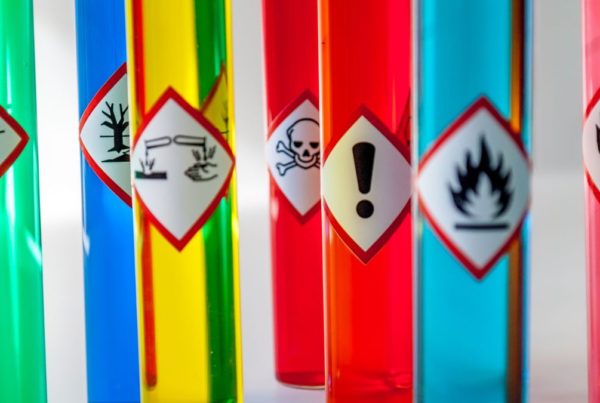Class 8 hazardous materials have specific minimum requirements for storing and handling, and it’s important for individuals and businesses to meet these requirements when handling such materials. The first step is understanding:
- What Class 8 hazardous materials are
- Common examples of Class 8 hazardous materials
- Proper storage of Class 8 hazardous materials
- The essentials of transporting Class 8 hazardous materials
When it comes to these or any type of hazardous materials, there are both legal and practical considerations.
Classes of Hazardous Materials
There are nine generally recognized classes of hazardous materials:
- Class 1: Explosives
- Class 2: Gases
- Class 3: Flammable and Combustible Liquids
- Class 4: Flammable Solids / Solid Combustible Materials
- Class 5: Oxidizing Substances, Organic Peroxides
- Class 6: Toxic Substances and Infectious Substances
- Class 7: Radioactive Materials
- Class 8: Corrosives
- Class 9: Miscellaneous Hazardous Materials
For our purposes, we’re going to be focusing on Class 8, one of the most harmful and most commonly encountered types of hazardous materials. While some classes are found only in limited quantities and in specific environments, corrosive Class 8 materials are encountered in industrial environments, in workplaces, and even in everyday households.
Definitions of Class 8 Hazardous Materials
The Class 8 hazardous material category covers corrosive materials that can cause significant damage to metals or living tissues through a chemical reaction. More specifically, Class 8 materials are those that are capable of causing full-thickness destruction to intact skin tissue at the site of contact or that eat away at steel or aluminum within a certain period of time.
Acids vs. Bases
When we’re talking about acids and bases, we’re talking about pH or the “potential of hydrogen.” The difference between the two is that acids give up hydrogen protons and bases receive them. Any substance with a pH lower than 7 (the pH of water) is classed as acid and any substance with a pH higher than 7 is base.
As you move 1 point down or up on the scale, the actual potential of hydrogen increases or decreases by a factor of 10, so a substance with a pH of 9 is 10 times more alkaline than one with a pH of 8 and a substance with a pH of 5 is 10 times more acidic than one with a pH of 6.
Consider the following table:
| pH | Factor of Multiplication | Examples (source) |
| 0 | x1,000,000 | Battery acid |
| 1 | x100,000 | Stomach acid |
| 2 | x10,000 | Vinegar, lemon juice |
| 3 | x1,000 | Orange juice |
| 4 | x100 | Beer, tomato juice |
| 5 | x10 | Black coffee |
| 6 | acid | Urine, saliva |
| 7 | neutral | Water, blood |
| 8 | base/alkaline | Baking soda |
| 9 | x10 | Hand soap, toothpaste |
| 10 | x100 | Mild detergent |
| 11 | x1,000 | Household ammonia |
| 12 | x10,000 | Hair straighteners (11.5 to 14.0) |
| 13 | x100,000 | Bleach |
| 14 | x1,000,000 | Caustic soda, drain cleaner |
Oxidizing Power
As you can see, some of the most acidic substances on the list are actually not that corrosive. Stomach acid (pH = 1) never ate through human skin, and you wouldn’t put a hazard label on the packaging of lemon juice (pH = 2). However, at a pH of 1.2, nitric acid is capable of dissolving warts and must be applied by an experienced professional!
The difference between stomach acid and nitric acid is that some acids have a high oxidizing potential whereas others don’t. That’s why the risk of skin corrosion is one of thehazardous waste characteristics for Class 8 hazardous materials.
Examples of Class 8 Hazardous Materials
In almost every industry, it’s likely that at least some Class 8 hazardous materials are used. These Class 8 hazardous materials need to be handled with extreme care.
Acids
Hydrochloric acid (HCL)
Hydrochloric acid is created when hydrogen chloride gas is mixed with water. At a concentration of 0.380, it has a pH of 1.1. Interestingly, our stomachs make HCL to assist in the digestion of food, but in this context, it is not corrosive to human skin. Manufactured and used elsewhere, however, it can cause severe burns and irritation.
Common industrial uses of HCL include:
- Turning starch into glucose
- Refining cane sugar
- Making glue and synthetic rubber
- Manufacturing plastics
- Purifying common salt
- Cleaning rusted and stained metals
- Cleaning and disinfecting kitchen tiles (in diluted form)
- Dissolving noble metals like gold and platinum
Sulfuric acid (H2SO4)
Sulfuric acid is a very strong, colorless mineral acid that bubbles and boils when mixed with water. At a concentration of 0.335, it has a pH of 0.5. Upon contact, sulfuric acid can cause destruction to the skin, eyes, lungs, and teeth. The most common uses of sulfuric acid are:
- Lead-acid (car) batteries
- Explosives
- Fertilizers
- Glue
- Dyes and paints
- Photography
- The refining of petroleum gas
- The curing of metal
Nitric acid (HNO3)
Nitric acid is a clear liquid that gives off red or yellow fumes. At a concentration of 0.680, it has a pH of 1.2. This liquid has many similar uses to H2SO4, including the production of fertilizers, explosives, and dyes. Ammonium nitrate fertilizer is the ammonium salt of nitric acid.
HNO3 can dissolve most metals, is used to remove warts (by a professional with the proper training), and can dissolve noble metals like gold and platinum if mixed with HCL. It is highly irritating to the skin, eyes, and mucous membrane, and exposure can lead to a serious condition such as pneumonitis, bronchitis, dental erosion, and pulmonary edema.
Bases
Ammonium hydroxide (NH4OH)
Ammonium hydroxide is a solution of ammonia in water. At a concentration of 1mM, it has a pH of 10.52. Vapors that rise up off this solution can cause eye damage.
NH4OH is used as a food acidity regulator, refrigerant, and glass cleaner, and it’s also involved in the production of:
- Detergents
- Textiles
- Soaps
- Ceramics
- Inks
- Explosive articles
- Pharmaceuticals
Potassium hydroxide (KOH)
Potassium hydroxide is the substance known as caustic potash. It has similar uses to sodium hydroxide, which is known as caustic soda. At a concentration of 1mM, KOH has a pH of 10.98 and can cause burns and irritation to the skin upon contact. This white, flaky substance is used in the production of:
- Soaps
- Shaving creams
- Soil remediation
- Fertilizers
- Biodiesels
- Chemical cremation
- Removing hair from animal hides
Sodium hypochlorite (NaCIO or NaOCI)
Sodium hypochlorite is an inorganic sodium salt that is used as a bleach, disinfectant, and antiseptic on topical wounds and skin ulcers. At a concentration of 0.05 (called Dakin’s solution), it has a pH of 11 and 10-to-12% available chlorine. In addition to the uses mentioned, NaCIO is also used in waste management and as a pesticide. At certain concentrations, NaCIO can cause skin irritation.
Storage of Class 8 Hazardous Materials – Current Requirements
Standards for handling, storing, and transporting Class 8 materials are covered by the Code of Federal Regulations, title 40, part 262, “Standards Applicable to Generators of Hazardous Waste.” Class 8 corrosive material needs to be stored with special care to prevent damage to the skin. Incompatible acids and bases also need to be kept apart because they could explode, ignite, or create toxic and corrosive gases if they mix.
If you use any corrosive liquids in the course of your work—including your materials of trade or even drain cleaner to clean the toilet—you must follow hazardous materials regulations for each container of Class 8 hazardous material. Businesses involved in the preparation of food products will also need to establish HACCP Hazard Analysis Critical Control Points.
Labeling Requirements
Corrosive liquids need to be kept in a corrosive-resistant package or drum that is labeled as “corrosive class 8” to meet hazardous waste label requirements. By convention, the packaging for this hazard class is the color blue.
Storage Cabinet Requirements
The individual packages of corrosive liquids must be stored in cabinets with close-fit doors that:
- Close by themselves
- Don’t swing inwards
- Are “escapable” by someone on the inside
- Have at least two catches to secure them shut
In case of leakage from packages, the cabinet should have a liquid-tight base made from a corrosive material that can hold a fair percentage of its total capacity. The rest of the cabinet’s interior should also be made from a corrosive-resistant material or have a lining that is resistant to corrosion. The shelves of the cabinet should be perforated or otherwise designed to promote the circulation of air. If any corrosive liquids leak, you will need to get professional cleanup and decontamination to prevent a health and safety disaster.
Transportation of Class 8 Hazardous Materials
The federal government has placed five distinct administrations in charge of writing hazardous materials regulations:
- Federal Aviation Administration (FAA)
- Federal Motor Carrier Safety Administration (FMCSA)
- Federal Railway Administration (FRA)
- Pipeline and Hazardous Materials Safety Administration (PHMA)
- United States Coast Guard (USCG)
These administrations establish the guidelines for carriers of Class 8 hazardous materials—corrosive liquids—as well as other hazardous materials of trade and commerce. They also outline the guidelines for employee training and driver training to make sure that carriers transport hazardous substances safely. For instance, special training is required of anyone who operates a tank vehicle or any vehicle or device that uses portable tanks with flammable liquid inside.
Packing Groups for Corrosive Liquids
Class 8 corrosive liquids are divided into three packing groups which are defined by the
corrosion rate of the liquid in a certain observation period:
UN Packing Group I
This is the “high danger” packing group. It includes “materials that cause full thickness destruction of intact skin tissue within an observation period of up to 60 minutes” starting after three minutes of exposure time or less.
UN Packing Group II
This is the medium danger packing group. It includes materials “that cause full thickness destruction of intact skin tissue within an observation period of up to 14 days” starting after three to 60 minutes of exposure time.
UN Packing Group III
This is the low danger packing group. These materials cause “full-thickness destruction of intact skin tissue or exhibit a corrosion rate on steel or aluminum surfaces exceeding 6.25 mm (0.25 inch) a year.”
Packing Requirements
Carriers are required to keep each kind of package under conditions that prevent damage during transportation on public highways. This includes the transport of materials by highway or on residential streets. When cylinders from different HAZMAT classes are mixed—for example transporting materials from Division 2.3, Hazard Zone A with materials from Division 2.1, Class 3, Class 4, Class 5, and Class 8—additional requirements must be met:
- A cylinder of Division 2.3 Hazard Zone A material must be at least 10 feet away from the other HAZMAT classes by horizontal distance.
- Division 2.3 Hazard Zone A or Division 2.1 material needs to be placed on pallets.
- If there is only a residue of Class 8 corrosive liquids, the freight container needs to be enclosed with inlet and outlet vents and have at least one square foot for every 1,000 cubic feet of trailer volume. Any electrical systems inside the freight container need to be explosion-proof and non-sparking.
- Cylinders must be upright in the freight container and secured to prevent them from shifting or falling over under normal conditions. Any pallets that support the cylinders must be designed to transport 3,500 lbs. each. The cylinders need to be secured to the pallets with a web strap rated at 10,000 lbs.
- The motor carriers need to meet the safety rating standard described in 49 CFR part 385.
Labeling Requirements
All Class 8 hazardous materials shipments are subject to the labeling requirements set by the U.S. Department of Transportation. These include the applicable placarding requirementsfor each cylinder containing poisonous material for transportation as well as the freight container itself.
In addition, the hazardous waste generator needs to meet shipping paper requirements by completing an electronic shipping manifest.
Why Proper Waste Management Is Essential
There is a lot that goes into handling corrosive liquids in order to comply with international standards and protect human and environmental health. For professionals, it’s important to find a waste management provider that caters to your industry and is experienced with hazardous waste handling. They can ensure that your business remains safe and compliant.
In the cannabis industry, hazardous cannabis waste management providers like GAIACA can take care of all of the details, including:
- Lockable, corrosion-proof cylinders and freight containers for storing corrosive liquids
- HAZMAT labels, placards, secondary containment, and hand equipment
- Pick-up services and delivery service to the appropriate disposal or recycling facilities
- Documentation of hazardous waste management to meet cradle-to-grave requirements
- Anything else you might need in order to meet the “Standards Applicable to Generators of Hazardous Waste” as laid out in the Code of Federal Regulations, title 40, part 262
No matter what your industry, professional oversight is imperative. If your business deals with Class 8 hazardous materials, don’t take any chances. The risks to your employee’s health and the legal standing of your business are simply too high.
